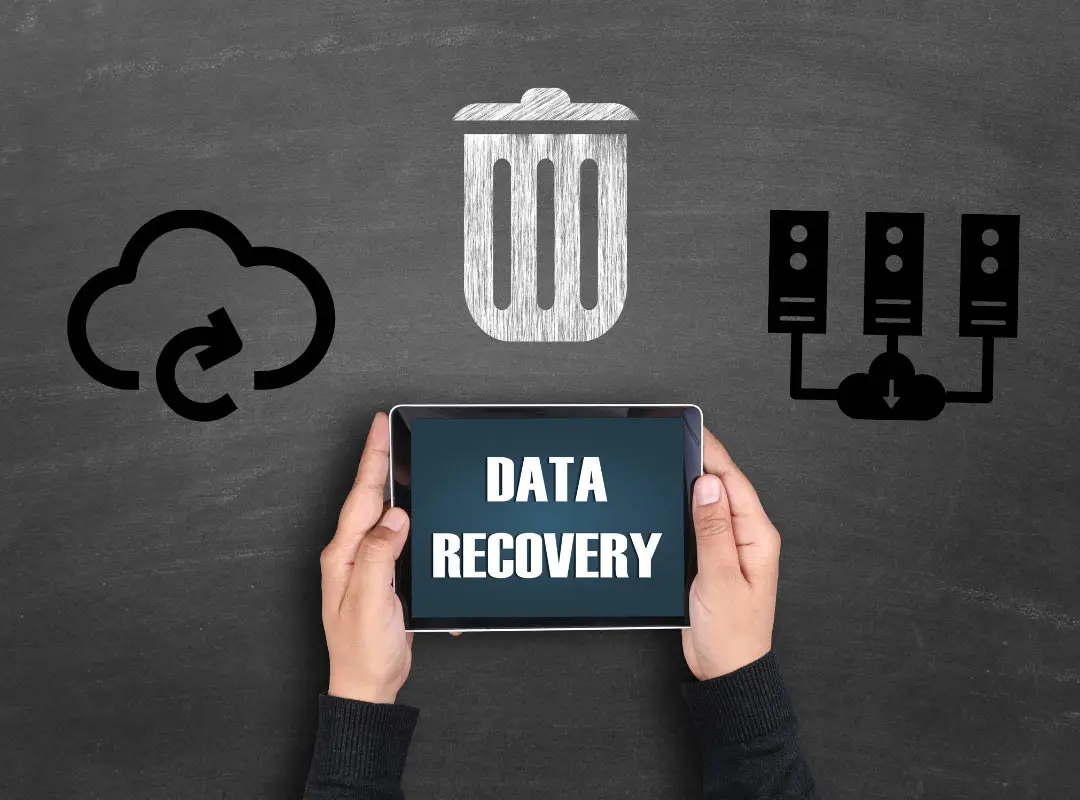Get us to call you
Fill in your details below to receive a call back quickly.
Fill in your details below to receive a call back quickly.
Fill in your details below to receive a call back quickly.
Fill in your details below to receive a call back quickly.


Business data recovery is about much more than regularly scheduled backups; it’s about having a robust plan, processes and systems in place to protect your company’s valuable data assets from loss. Data loss or corruption can be catastrophic for businesses, which is why it’s so important to understand why you need safeguards in place, and what is required for an actionable Disaster Recovery Plan, should you ever need it.
Data recovery is about having a process in place to recover data, files and applications that have been:
Every organisation collects, stores and processes enormous amounts of data every day in the course of normal operations. Loss of internal and external files like client information, business financial data, employee records, emails, documents and content (your business’s intellectual property), can be disastrous to business continuity, and extremely damaging to your business reputation. For some organisations, this could even send them out of business.
Data recovery processes are vital to prevent this from happening, so that you don’t lose essential business data. Understanding the components of data recovery will help you keep your organisation’s operations from being impaired due to data loss.
All data recovery processes should be detailed within a documented Disaster Recovery Plan. This Plan is a strategy that sets out the steps to be taken to prevent and mitigate data loss due to cybercrime attacks, equipment failure, natural disasters, power outages and other emergencies, and the technologies and systems in place to support these steps.
A documented Disaster Recovery Plan will outline:
A core component of data recovery is having a robust backup schedule in place that’s strictly adhered to, including daily and weekly backups of on-premise and cloud-based servers. For some enterprise level organisations, this may include continuous data backups, due to the volume and scope of their data and applications. Your backup plan and schedule should be executed to cover:
Backups should be stored in a primary (potentially on-site location) as well as a secondary (off-site or cloud) location. If using a third-party cloud provider for backup services, the cloud provider has responsibility for the secure management of your data, which provides another layer of assurance.
Backup data should be encrypted for transition and storage, and protected through physical and virtual access level security and controls.
Data recovery software enables retrieval and repair of data that’s been deleted, corrupted or is no longer accessible on the devices or storage locations where it was saved. It has access to your hard disk drives’ core architecture, so it can not only recover deleted and corrupted data and storage devices, but also repair damaged hard drive partitions.
There is a wide range of data recovery software available to recover user files and data. However, software for data recovery won’t help you in the event your data has been compromised or hijacked through malicious acts, which is why data recovery software is a tool to be used in conjunction with your disaster recovery plan and robust backup processes.
Data recovery processes are a vital part of ensuring your business has the processes, systems and technology in place to protect its essential data, files and applications. This includes having:
All three components, executed and monitored for effectiveness and fitness, are critical for ensuring your business can continue to operate, or at least recover as quickly as possible from data loss or corruption.
Here at SouthEast IT, we’re the data recovery and off-site cloud-based backup experts, and can help support your disaster recovery process. We provide monitored backup services to ensure that your data is protected and has the necessary redundancy in place in event of data corruption, system failure, physical or environmental disaster, or other data loss event within your organisation.
If you’d like to find out more about data recovery and the steps your business needs to take to protect its essential data, files and systems, contact us today. No matter what size your business is, SouthEast IT is here to help you plan for the unexpected, so that you can keep your business running smoothly.